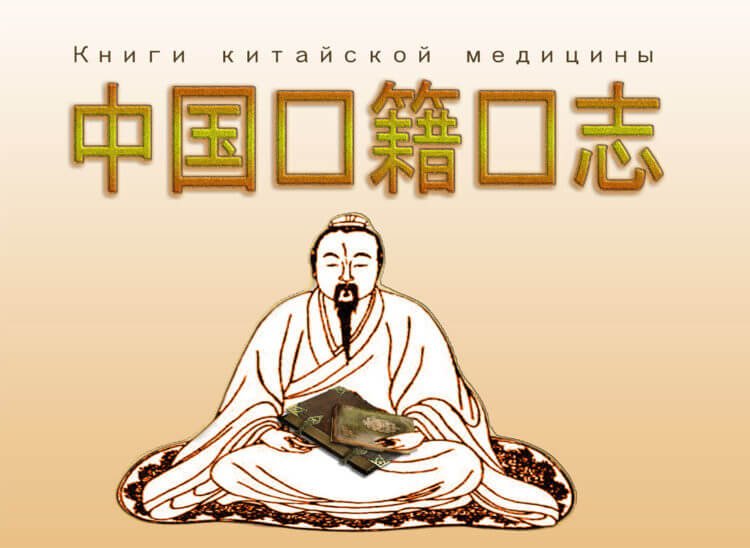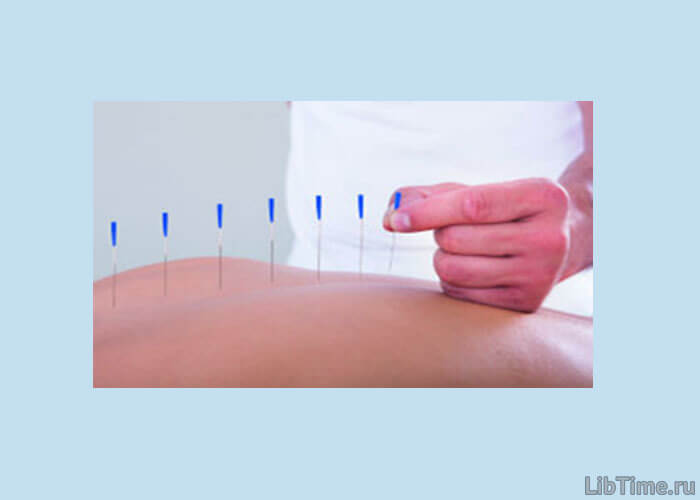About the pulse in Chinese medicine
The doctrine of pulse in Chinese medicine can be rightfully considered the pinnacle of diagnostics of national treatment. Indeed, the successes achieved by its representatives in the field of pulse research not only outpaced both in time and in content the development of the corresponding branch of medical science in Europe, but also anticipated much that is used today.
Pulse diagnosis
The pulse and the heart are interrelated, they are organs of the cardiovascular system.
The heart "drives" the blood through the vessels through all the organs, and this movement is manifested in the pulse, which thus makes it possible to determine the state of the body as a whole and its individual parts.
Here, approximately, is the theoretical interpretation given to pulse diagnosis by Chinese physicians in the 5th century BC, (more details: Development of Chinese medicine). As for this date, the opinions of historians are fairly unanimous. Folk tradition attributes the discovery of the pulse method of recognizing diseases to the name of Bian Que, (read more: Medicine of ancient China), about whom there are many legends.
In the chronicle "Shi-ji" ("Historical Notes"), belonging to Sim Qian, the first work, which summarizes significant material and gives a systematic picture of the history of China from ancient times to the end of the 2nd century BC, the following is narrated.
When the dignitary Jian Zi from the principality of Zhou and the prince of the principality of Gou fell into a prolonged faint, everyone thought that they died. Bian Qiyue happened to be in those places at that time. The first thing he did was to feel the pulse on the hands of the supposedly dead and by the pulse he was convinced that they were alive. With the help of acupuncture the famous physician cured both of them.
Literature on the pulse in Chinese medicine
By the beginning of our annals, there was already an extensive literature on the pulse in China. In 280 A.D., the book "Meitii" was published, in which Wang Shu-he described 35 types of pulse.
What is this "pulse method" of diagnosis, which was mastered in China a very long time ago? First of all, it should be said about the technique of pulse examination. It can be done at 11 different points:
- the radial artery,
- the ulnar artery,
- the temporal artery,
- the arteries of the feet,
- in the atrial region,
- three points on the aorta, which is achieved by pressing on the abdominal walls,
- but most often the pulse is examined at the pulsation point of the radial arteries of the hands.
It is here, according to Chinese physicians, is the "concentration point" of the pulse - "chen-kou" (such points are characteristic of all other processes occurring in the body).
Pulse studies
Pulse studies are performed on both hands, but first on the right hand. In this case, the pulse of the right hand of the patient, the doctor feels his left hand and, conversely, his right hand - the left hand of the patient. The latter puts it palm upwards, resting the lower part of the forearm and the upper part of the hand on a special pad (a measure as original and remarkable as the use of both hands for this purpose).
The physician places three fingers on the artery - the ring finger, middle finger, and index finger; the thumb rests on the posterior lower surface of the forearm. But the pulse is not examined with all fingers at once, but with each of the three fingers in succession.
The location of the classic points of determining the pulse
- With the middle finger it is determined at the point "guan mo", which is located on the palm side, approximately at the level of the styloid process of the radius. "Guan mo" means "obstructing the pulse". This name, obviously, wanted to emphasize the median position of this point relative to the other two - "jin mo" and "chi mo".
- Examined respectively with the index and ring fingers, they are called "inch" ("jin mo") and "foot" ("chi mo"). In the inch - the phalanx of his middle finger - determined the distance from the point "jin" to the end of the wrist bone of the thumb, and in a foot - his foot - the distance from the point "chi" to the elbow crease. These are the locations of the classical points.
Purpose of pulse points
And here is what is the purpose of the pulse points. According to Chinese doctors:
- a pulse at the jin point indicates a condition in the upper body,
- the guan point indicates the middle part of the body,
- and the chi point is where the organs in the lower third of the body are located.
But the organs are located at different depths. Chinese physicians have taken this circumstance into account. By changing the force of pressure of fingers on the artery, they try to change the "depth of penetration" into the body.
- Very light pressure - "tui" is considered to be a means of obtaining information about the activity of the external organs closest to the surface of the body,
- medium - "xun" - about organs of medium depth,
- Finally, "an" - pressing the artery to the bone - should give an idea of the organs hidden in the very depths of the body, up to the bone marrow.
The principle of individual approach
With the same methodicalness and consistency with which its theories of Chinese medicine are applied in practical medicine of China, the principle of individual approach to the patient in general and to pulse research in particular is implemented in everything written on its banner.
Thus, in people of small stature it is recommended to put fingers for pulse examination more tightly, and in case of big stature - less frequently (here, when "inch" and "foot" can be useful).
But there is another very interesting indication: the pulse is monitored not by the clock, although the counting of time was known to the Chinese one of the first (in the era of Zhou, approximately, in the 8-7 centuries BC, they very accurately determined the length of the year in 365.25 days), and accordingly breathing of the patient. And each study of pulse counting lasts for nine complete inspirations.
The norm was recognized as 3-5 pulse beats for each full respiratory cycle. A more frequent pulse, often explained by an increase, and slowed down against the norm - a decrease in body temperature, has its own diagnostic value. Chinese physicians explained the increase in pulse rate by the prevalence of "heat", i.e. active, strong beginning, and slowing down - the prevalence of "cold" - the beginning of passive, weak.
As we can see, there is a certain correspondence between ancient Chinese and modern points of view on this issue.
Properties of pulse
When examining the pulse, we determine such properties as frequency, rhythmicity, filling, tension, the size of the pulse wave, and by comparing the pulse on both hands, we establish its simultaneity and similarity.
Chinese medicine seeks to establish additionally the depth of the pulse, its "vigor", compliance or inconsistency with the general condition of the subject, the syndrome of his disease, etc., as well as the presence of the "root" of the pulse.
The concept of the "root" of the pulse
Extending the concept of "root" to all processes, finding it in all phenomena, including the pulse, Chinese physicians (and one of the first to do so was the mentioned Wang Shu-he) consider the root pulse in the point "chi" on the hands and in three points on the legs (they are also very interested in the types of pulse on the legs).
"Not indigenous" is considered the pulse, which is palpable already with a light pressure "Ju", but disappears with a strong pressure "an". Considered prognostically very unfavorable phenomenon disappearance of the pulse in the "root" points.
The depth of the pulse
It is interesting to get acquainted with such a definition as the depth of the "laying" of the pulse. First of all, we note that it is a priori considered different in people of different complexion, different character, different sex and at different times of the year and day.
For obese individuals characterized by greater depth, for thin - less, in the period of the winter equinox pulse "lays" deeper than in the summer, it is deeper and people with a closed character, balanced and calm in contrast to persons egoistic, vain, vain, restless. More superficial pulse is observed in men, deeper - in women.
In general, all that is characterized by the predominance of female "yin", corresponds to a greater depth of "laying" pulse, while the male "yang" - less. And if the patient's pulse depth does not correspond to this disease, it is also an unfavorable symptom.
Symptom of "pulse vigor" disorder
Similarly, a disturbance of the "vigor of the pulse" is also considered an unfavorable symptom. This definition only partially coincides with the strength of the pulse. Rather, it implies a pulse that is sufficiently full, rhythmic and moderate in frequency.
If we distinguish the pulse jumping, dicrotic, alternating, etc. according to the defined set of properties, Chinese medicine not only uses these definitions more widely, but also developed further the doctrine of its types. In all it counts several hundred shades (practically the use of at least 74 is prescribed). Such is the sum total of more than two thousand years of work done by the physicians of China since the time of Bian Que.
"Moderate" pulse
The "moderate" pulse is considered to be the most consistent with the norm. It is four pulse waves calmly passing in one respiratory cycle, with a medium depth of occurrence, medium frequency and filling. This type of pulse is a kind of exception to the huge number of other forms, differing from them in that it does not have an "opposite pair".
It is difficult to say what exactly explains this principle of classification of types of pulse (perhaps the same dialectically competing "yang" and "ying"), but the fact is indisputable: all other forms of pulse are described in the form of "opposite pairs".
Types of pulse
Six basic types of pulse are paired: superficial and deep, frequent and infrequent, free and astringent. Other types of pulse are also represented in pairs, of which we will cite only a few:
- full and empty,
- overt and covert,
- long and short,
- soft and hard,
- tense and diffuse,
- fast and slow, etc.

These names speak for themselves, and the types of pulse Chinese medicine practitioners know so many, that there is no possibility to even enumerate them.
Paradoxical pulse
A few words about the so-called paradoxical pulse. There are seven types of paradoxical pulse, each of which has its own very original (even metaphorically bright, as it is generally characteristic of the Chinese language) name:
- "cho jo" (the nibble of a bird),
- "wu li",
- "xia yu",
- "tan shi",
- "yu xiang" (fish swimming),
- "fu fei",
- "tei su" (untying a knot).
These paradoxical types of pulse are considered unfavorable in the prognostic sense, and, having discovered them, the physician feels obliged to treat such a patient with great caution. Unfavorable prognosis is established by Chinese physicians and when they find a discrepancy between the type and nature of the pulse, on the one hand, and the condition of the patient - on the other.
They seek to establish the adequacy or inadequacy of the pulse to the general syndrome of the disease. This position deserves special attention. It once again proves the desire of Chinese physicians to consider the totality of the phenomena under study, not limiting themselves to the pulse method, in which some are inclined to see almost the only means of Chinese diagnosis.
And while our specialists have to a great extent limited the field of investigation of the adequacy and inadequacy of the pulse, Chinese medicine in establishing prognosis uses these signs widely to this day.
She considers the adequacy of the pulse to the existing clinical syndrome as an important and favorable prognostic sign, and inadequacy - as a phenomenon that gives reason to assume a very severe course of the disease.
Prescribing therapeutic agents
These principles of "pulse diagnosis" are widely used to guide the prescription of therapeutic agents. Chinese physicians prescribe certain drugs based on the general condition of the patient and the state of his pulse.
- A patient who complains of chills, headache, fever, if in addition he has a tense "floating" pulse, they prescribe strong diaphoretics.
- But with the same complaints and weak "floating" pulse, these drugs are considered contraindicated and instead of them prescribed strengthening, cardiac means.
The whole system of "pulse diagnosis" is practically inseparable from the doctrine of indications and contraindications to the use of certain therapeutic agents. Thus, with a frequent and imperceptible pulse contraindicated acupuncture and moxibustion, with deep and tense recommended diuretics and laxatives.
By in-depth development of the doctrine of pulse in Chinese medicine, Chinese doctors have long been ahead of the medicine of many countries, achieving thanks to this method of diagnosis much better, compared with others, results in recognizing diseases.
And the accumulated data are well worthy that modern medicine should be interested in them in order to use all that can enrich modern clinical diagnostics.


